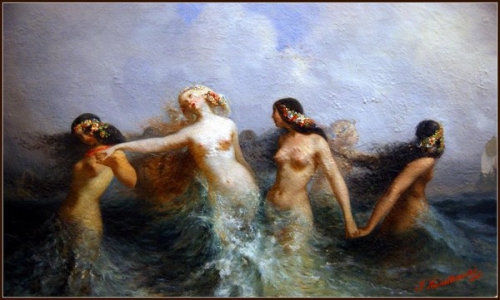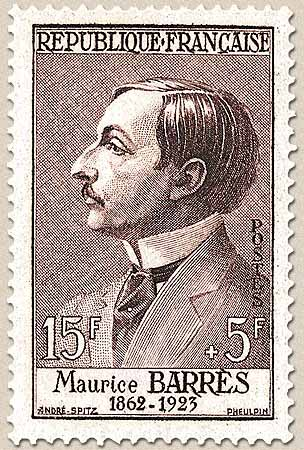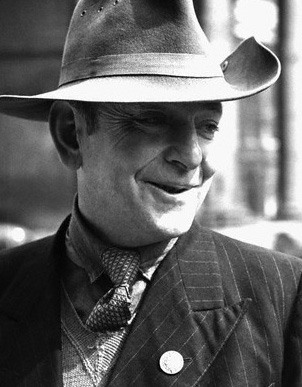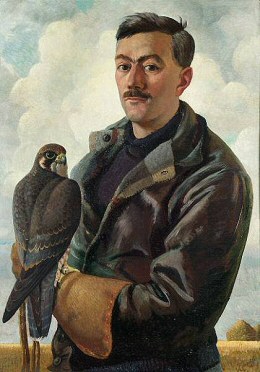mardi, 27 janvier 2015
Culture and “engagement”: French and English perspectives

by Adrian Davies
Ex: http://www.traditionalbritain.org
Adrian Davies critiques artistic and cultural involvement on the Right in England and France.
A talk by Adrian Davies to the Traditional Britain Group on 18th October 2014
This morning I shall talk to you about differing perspectives upon the involvement of artists and writers in politics in France and England. Why France and England? Partly because it is necessary to keep this talk in some bounds, partly because I know a little more about the relationship between high culture and low politics in France than in Germany or Italy or Spain, and will stick to what I know, often a prudent course.
The concept of “engagement”
Jean-Paul Sartre is at first blush an odd choice to cite at a rightist meeting, but on further consideration, he is a strange hero for the left. After 1940, he did not merely accommodate himself to prevailing circumstances, which might be unheroic, but very human, rather he appears thoroughly to have enjoyed himself: “We were never so free as under the occupation.” Not a sentiment that would have endeared him to post-war bien pensant opinion.
But I am not here to discuss Sartre’s life, his works, his politics or even his philosophy in general, interesting though all those subjects might be, but only his idea of engagement, which I shall loosely but not I think inaccurately translate as commitment.
Engagement as a philosophy suggests that the exponents of high culture, whether in literature, music or the visual arts should by no means think themselves above and hold themselves aloof from politics.
This is not an universally accepted view. Théophile Gautier, famous for advocating l’art pour l’art, art for art’s sake, vividly expressed the contrary view in the preface to his story Mademoiselle de Maupin: «Il n’y a de vraiment beau que ce qui ne peut servir à rien, tout ce qui est utile est laid.» “Only that which has no practical purpose can be truly beautiful. Whatever is useful is [also] ugly”.

Les Néréides de Théophile Gautier
But while I greatly admire Gautier as a literary figure, he was exaggerating, perhaps for effect, perhaps in reaction to the romantic movement, which had been much preoccupied with political questions.
The romantics were caught up in the nationalist movement that transformed European politics in the nineteenth century, moving away from earlier dynastic and denominational models of the state to the ideal of the nation state, about which I have to say that I am less enthusiastic now than once I was. The reasons why would involve a digression that I must resist with a thirty minute slot, though as we mark the centenary of the horrors of 1914, they are not so difficult to guess, and I shall touch upon them briefly when I speak about one of the great French literary exponents of engagement in the early part of the 20th century, Maurice Barrès.
The arch-romantic, Victor Hugo, certainly demonstrated how different French thought is from Anglo-Saxon liberalism, which has for too long placed the liberty of the individual above the common good, in the immortal words of the hero of Les Misérables, Enjolras: citoyen, ma mère, c’est la république! “Citizen, the state is my mother”.
I do not think that Randians would applaud this sentiment, but then I sometimes think that for the English classical liberal, Ezra Pound’s reproach to the business class in the closing lines of the famous 38th Canto “faire passer ses affaires avant celles de la nation” “putting your own interests before those of the nation” appears to be not blameworthy, but a natural right.
The Parnassians returned to classical models in reaction to romanticism, but in this respect their classicism scarcely reflects the ancient world, where Virgil and Horace were fulsome in their praise of Augustus’ vision of Rome, echoing a time long before them, when Simonides, who was not a Spartan, launched the cult of things Lacadaeomian with his epitaph upon the Spartan dead at Thermopylae.
Indeed, they themselves were the exponents of an ideology of a kind:
«Le culte du travail est l’un des éléments fondamentaux du parnasse. Il est souvent comparé au sculpteur ou au laboureur qui doit transformer une matière difficile, le langage, en beau par et grâce à un patient travail.
«Chez Lemerre, on observe la vignette d’un paysan avec inscrit au-dessus : «Fac et Spera », ce qui signifie : « agis et espère ». Cela témoigne de la volonté d’atteindre la perfection, en remettant vingt fois sur le métier son ouvrage, atteindre la perfection grâce à un patient et long travail.»
“The cult of work is an essential element of what it means to be a Parnassian writer. The writer is often compared with the sculptor or craftsman, who has to transform a difficult raw material, language into something beautiful by patient work.
“Lemerre made a vignette of a peasant inscribed fac et spera, which means, ‘act and hope’. It bears witness to the will to attain perfection by essaying the work in hand twenty times over so as to attain perfection by a long, patient effort.”
We are much indebted to the heretical Italian Communist Gramsci for the valuable idea of hegemony and the mastery of discourse in the world of ideas.
Gramsci may have been a hideously ugly, grotesquely misshapen dwarf, but when he expired in one of Mussolini’s insalubrious gaols, the world lost an original thinker, who, rather ironically, would most certainly have suffered a similar or worse fate in the Gulag, had he succeeded in fleeing to the Soviet Union.
For all its supposed love of non-conformity, the world of high culture is no less susceptible to fashion and to hegemonistic discourse than low politics.
By way of example, I well recall seeing the marvellous retrospective on Jean-Léon Gérome at the Getty Centre in Los Angeles 2010 - as the cataloguist frankly admitted, a far more gifted painter than most of the impressionists but long neglected because his extreme neo-classicism in both style and subject matter did not conform to the vogue for the impressionists that had become received thinking in the art world by the end of the 19th century.
Naturally this tendency is redoubled when art serves a political cause outside the narrow parameters of permitted debate under totalitarian liberalism, which is not a contradiction in terms, but a correct description of the soft tyranny under which we live.
A very vivid example that I remember was the astonishing exhibition called Art and power: Europe under the dictators at the Hayward Gallery so long ago, I shudder to realise (tempus fugit!) as 1995. Much of the art then on display has merit, but it is not generally shown, because it served ideologies that differ from bourgeois liberalism, and is condemned on that account, regardless of its intrinsic merit, which of course involves a tacit denial of the concept of intrinsic merit.
Nor is it only Fascist or National Socialist art that has disappeared down the memory hole, or at least been veiled from public view except on special occasions, such as the Hayward exhibition.
The official art of the Soviet Union is not viewed with favour in the West to-day, because it followed the representative tradition, which has been derided by self-styled cognoscenti since the days of the Impressionists, as I have noted.
Yet Socialist Realism in art and literature had many merits. Even Joseph Stalin was not wrong about everything. Modern western commentators generally assume not only that Stalin was wrong to interfere with artistic freedom by compelling Shostakovich to recant his atonalist tendencies and return to a more classical style of composition, and more fundamentally that Stalin’s criticisms of the score of Lady Macbeth of the Mtsensk District (1934) betray a lack of taste on the Vozhd’s part. Yet Stalin had watched the opera with careful attention, and his criticisms of the music are not lightly to be dismissed.
For myself, whatever Stalin’s terrible crimes, amongst the very worst of all times, still I am with the Vozhd on that question, and generally approve of the conservative tendencies in art, literature and music that were increasingly manifest under his rule.
More damaging even than the liberal hegemony of aesthetics is the liberal hegemony of discourse that would, if it only could, altogether exclude from the literary canon the great writers of the twentieth century in support of the lying fable that artists, writers and intellectuals are predominantly if not exclusively of the left.  This lie is manifestly not sustainable for French literature, where engagement in politics was as common on the right as on the left. The names of Maurice Barrès and Charles Maurras will certainly live for so long as there is a French nation. Both attained the highest levels of literary aesthetic, though neither is nor should be immune from criticism. Maurice Barrès’s desire to see his native Lorraine returned to France led him to impassioned public support of the bloodshed of the First World War that won him the terrible sobriquet of le rossignol des carnages (the nightingale of carnage), and was not an advert for nationalism, while Maurras wished to see an end to the Republic, but failed to provide decisive leadership at a crucial moment in February 1934, when the conjunction of political circumstances was favourable to his wishes, so demonstrating that he was not the man of destiny that his followers thought him.
This lie is manifestly not sustainable for French literature, where engagement in politics was as common on the right as on the left. The names of Maurice Barrès and Charles Maurras will certainly live for so long as there is a French nation. Both attained the highest levels of literary aesthetic, though neither is nor should be immune from criticism. Maurice Barrès’s desire to see his native Lorraine returned to France led him to impassioned public support of the bloodshed of the First World War that won him the terrible sobriquet of le rossignol des carnages (the nightingale of carnage), and was not an advert for nationalism, while Maurras wished to see an end to the Republic, but failed to provide decisive leadership at a crucial moment in February 1934, when the conjunction of political circumstances was favourable to his wishes, so demonstrating that he was not the man of destiny that his followers thought him.
I need say no more about the literature of collaboration than to observe that some of the greatest writers of the time were committed collaborators. Some, such as Brasillach, who was executed, and Drieu La Rochelle, who succumbed to depression and committed suicide, paid for their engagement with their lives, others, such as Céline, whose extremism embarrassed even the Germans, were capriciously amnestied and continued with their writing after the Second World War, quite unrepentant.
But it would be a mistake to think that writers and artists of the right were not to be found in England and the English speaking world.
Wyndham Lewis
Of Canadian and American parentage, Wyndham Lewis studied art in Paris in the early years of the 20th century. He was one of the leaders of the so-called Vorticist movement in art, and served with honour in the First World War as an artillery officer, seeing action in the third battle of Ypres and amongst his Canadian compatriots on the Vimy ridge. He was made an official war artist and stayed in the front line to sketch out what would become his canvasses.
Happily he survived the war less traumatised than many, and combined painting with writing in the interwar years.
It is certainly remarkable that just as Wyndham Lewis reached the peak of his creativity and success as a portraitist, he also became a force to be reckoned with in literature, notably with his satirical novel, The Apes of God, mocking the Bloomsbury Set to which he had at first been attracted, but with which he had eventually broken.
There was a strong, even strident political theme in his writing. He vehemently opposed the left wing orthodoxy that already dominated intellectual circles in the 1930s. Probably his best novel, The Revenge for Love (1937) set in the period leading up to the Spanish Civil War, expressed utter loathing for the Communists in Spain and profound contempt for their British and fellow-travellers, while his painting the Surrender of Barcelona celebrates the nationalist victory, not a politically correct theme at all.
He thought little of post-war Britain, his last major work entitled Rotting Hill "the capital of a dying empire." That was 1952. What he would think of the degenerate stew of modern London passes even my imagining.
Roy Campbell  While undoubtedly the Republican side in the Spanish Civil War attracted more writers and artists than did the cause of national Spain, there were some notable supporters of the Francoist cause. Unsurprisingly Ezra Pound was parti pris on the right side. Pound merits a whole talk of his own and I will not attempt the hopeless task of precising his life and work in the time available to me this afternoon. I will however mention Roy Campbell.
While undoubtedly the Republican side in the Spanish Civil War attracted more writers and artists than did the cause of national Spain, there were some notable supporters of the Francoist cause. Unsurprisingly Ezra Pound was parti pris on the right side. Pound merits a whole talk of his own and I will not attempt the hopeless task of precising his life and work in the time available to me this afternoon. I will however mention Roy Campbell.
Campbell, a South African poet and sometime friend of Laurie Lee of Cider with Rosie fame. Campbell, a Catholic convert, was one of the few literary figures strongly engaged on the Nationalist side. Methuen published his long poem, the Flowering Rifle, the author’s foreword to which would certainly not be published by any main stream publisher to-day, so much less free is the England of 2014 than the England of 1939.
“Humanitarianism invariably sides where there is most room for sentimental self-indulgence in the filth or famine of others. It sides automatically with the Dog against the Man, the Jew against the Christian, the black against the white, the servant against the master, the criminal against the judge. It is a form of moral perversion due to overdomestication, protestantism (sic) gone bad”.
Just in case you have not got the picture, the foreword concludes ¡Viva Franco! ¡Arriba España!
Interestingly, Laurie Lee was visiting Campbell in Toledo when the war in Spain broke out. Lee, shocked by the poverty of the Andalusian peasantry, fought in the International Brigades, but Campbell, horrified by the Communist massacres of the clergy of Toledo, made propaganda for Franco. In such ways do the same events affect even friends differently.
Campbell was a staunch anti-Nazi, who went on to fight in the British Army in the Second World War, but still could not work his passage back into literary London afterwards. “It made no difference that one fought as willingly against Fascism as one had done against Bolshevism previously” he complained. “Even if you killed ten times as many Fascists as you had previously killed Bolsheviks in self-defence, you still remained a Fascist”.
Given the tone of the foreword to the Flowering Rifle, it is surprising that he thought that he might be forgiven in the post-1945 climate.
Henry Williamson  Henry Williamson was another author who was deeply politically engaged in the most controversial way, but whose reputation has been somewhat sanitised by excessive focus on his nature writing, especially his great success, Tarka the Otter, rather than his deeply political and semi-autobiographical cycle of novels A Chronicle of Ancient Sunlight. It tells the story of his South London boyhood, his experiences at the front in the First World War veteran, and his progressive evolution into that apparent contradiction in terms, a pacifiist and a fascist, and his complex relationship with Sir Oswald Mosley, an idealised version of whom appears as Sir Hereward Birkin, the leader of the Imperial Socialist Party, based on the British Union of Fascists.
Henry Williamson was another author who was deeply politically engaged in the most controversial way, but whose reputation has been somewhat sanitised by excessive focus on his nature writing, especially his great success, Tarka the Otter, rather than his deeply political and semi-autobiographical cycle of novels A Chronicle of Ancient Sunlight. It tells the story of his South London boyhood, his experiences at the front in the First World War veteran, and his progressive evolution into that apparent contradiction in terms, a pacifiist and a fascist, and his complex relationship with Sir Oswald Mosley, an idealised version of whom appears as Sir Hereward Birkin, the leader of the Imperial Socialist Party, based on the British Union of Fascists.
Williamson is a curious example of a green fascist, but he was not the first: that distinction surely belongs to William Henry Hudson, born in Argentina of British stock, who went on to become the most significant English language writer on South America, the first to espouse green issues, almost a century before Silent Spring.
Hudson was also an unrepentant apologist for the proto-fascist and archetype of the charismatic caudillo, General Rosas, who ruled Argentina with an iron hand for nineteen years, and is, with his twentieth century equivalent, General Peron, still dear to the hearts of the common people of that far away land, unlike most of their rulers.
But the story of the proto-green and the great caudillo is too long and too interesting to tell in the short time remaining, so I will tell it another day.
Content on the Traditional Britain Blog and Journal does not necessarily reflect the opinions of The Traditional Britain Group
00:05 Publié dans Littérature, Philosophie, Réflexions personnelles | Lien permanent | Commentaires (0) | Tags : lettres, lettres françaises, lettres anglaises, littérature, littérature française, littérature anglaise |  |
|  del.icio.us |
del.icio.us |  |
|  Digg |
Digg | ![]() Facebook
Facebook



Les commentaires sont fermés.